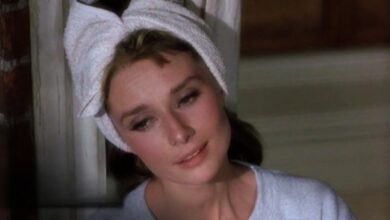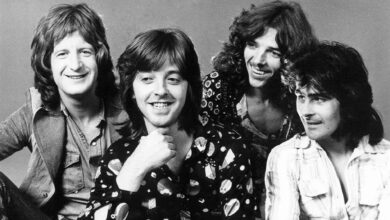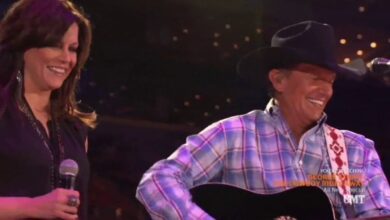Knock Three Times: The Story Behind Tony Orlando & Dawn’s Timeless 70s Hit
In the vibrant tapestry of 1970s pop music, few songs captured the public’s imagination quite like “Knock Three Times” by Tony Orlando and Dawn. Released in November 1970, this catchy tune quickly climbed the charts, reaching the coveted No. 1 spot on the Billboard Hot 100 in January 1971. Its infectious melody and relatable lyrics resonated with audiences, leading to over six million copies sold worldwide. The song’s success was not confined to the United States; it also topped charts internationally, cementing its place as a global hit.
The origins of “Knock Three Times” are as intriguing as the song itself. Tony Orlando, born Michael Anthony Orlando Cassavitis on April 3, 1944, had experienced moderate success in the 1960s with hits like “Bless You” and “Halfway to Paradise.” By 1970, he had stepped away from performing and was working as a music executive at April-Blackwood Music, a division of Columbia Records. It was during this time that he was approached with a song called “Candida,” which he recorded under the pseudonym “Dawn” to avoid conflicts of interest with his employer. The success of “Candida” set the stage for the follow-up hit, “Knock Three Times.”
The creative minds behind “Knock Three Times” were songwriters Irwin Levine and L. Russell Brown. Tasked with crafting a follow-up to “Candida,” they drew inspiration from the urban living experience. The song tells the story of a young man infatuated with his downstairs neighbor, using the building’s infrastructure as a means of communication—knocking on the ceiling or pipes to signal his romantic interest. This imaginative narrative, combined with a catchy chorus, made the song an instant favorite among listeners.
Recording “Knock Three Times” was a unique experience. Tony Orlando provided the lead vocals, while backing vocals were supplied by session singers including Toni Wine and Linda November. Interestingly, at the time of recording, “Dawn” was not an actual group but rather a moniker used for the release. The name “Dawn” was chosen because Bell Records executive Steve Wax had a daughter named Lisa Dawn Wax. It wasn’t until the song’s success that a real-life group was assembled for touring and further recordings.
Following the success of “Knock Three Times,” there was a need to form a touring group to capitalize on the song’s popularity. Tony Orlando enlisted the talents of Telma Hopkins and Joyce Vincent Wilson, both accomplished vocalists with backgrounds in Motown and Stax Records. This trio became known as “Dawn featuring Tony Orlando,” and they embarked on tours, bringing their music to fans across the country. Their chemistry and harmonious performances endeared them to audiences, leading to further successes.
The impact of “Knock Three Times” extended beyond the music charts. Its catchy tune and relatable story made it a cultural touchstone of the early 1970s. The song was featured in various films and television shows, further embedding it into the fabric of pop culture. Its success also paved the way for Tony Orlando and Dawn to host their own television variety show, which showcased their musical talents and comedic flair, reaching a wide audience and solidifying their place in entertainment history.
The television variety show, titled “Tony Orlando and Dawn,” aired on CBS from 1974 to 1976. It featured musical performances, comedy sketches, and guest appearances by prominent celebrities of the time. The show’s popularity highlighted the trio’s versatility and broad appeal, allowing them to connect with fans in a new and dynamic way. This period marked the zenith of their fame, as they became household names and beloved entertainers.
Beyond “Knock Three Times,” Tony Orlando and Dawn continued to produce hits that resonated with audiences. Songs like “Tie a Yellow Ribbon Round the Ole Oak Tree” and “He Don’t Love You (Like I Love You)” showcased their ability to blend storytelling with melody, creating music that was both entertaining and emotionally impactful. Their discography reflects a range of themes and styles, demonstrating their adaptability and talent in the evolving music landscape of the 1970s.
The legacy of “Knock Three Times” endures, with the song continuing to receive airplay on classic hits radio stations and being covered by various artists over the years. Its timeless appeal lies in its simple yet evocative storytelling, catchy melody, and the heartfelt performance by Tony Orlando and Dawn. The song stands as a testament to the power of music to capture the essence of an era while remaining relevant to subsequent generations.
In reflecting on the journey of “Knock Three Times,” it’s evident that the song’s success was a confluence of creative songwriting, engaging performance, and strategic production. Tony Orlando’s charismatic delivery, combined with the harmonious backing vocals and relatable narrative, created a piece that transcended its time. The song’s enduring popularity highlights its universal themes of love and communication, resonating with listeners across different backgrounds and eras.
The story of Tony Orlando and Dawn is one of serendipity and talent converging to create memorable music. From Tony Orlando’s initial reluctance to return to performing, to the formation of a cohesive group, and the subsequent rise to fame, their journey underscores the unpredictable nature of the music industry. Their ability to connect with audiences through relatable stories and melodies ensured their place in the annals of pop music history.
As we revisit “Knock Three Times” today, it serves as a nostalgic reminder of a bygone era while still offering enjoyment to new listeners. The song’s blend of narrative charm and musicality continues to captivate, illustrating the timeless nature of well-crafted pop music. Tony Orlando and Dawn’s contribution to the musical landscape of the 1970s remains significant, with “Knock Three Times” standing as a hallmark of their artistic achievement.
In conclusion, “Knock Three Times” is more than just a song; it’s a cultural artifact that encapsulates the spirit of the early 1970s. Its creation, success, and enduring legacy reflect the collaborative efforts of talented individuals and the universal appeal of its themes. As we listen to its familiar strains, we’re reminded of the power of music to tell stories, evoke emotions, and bring people together across time and space.



